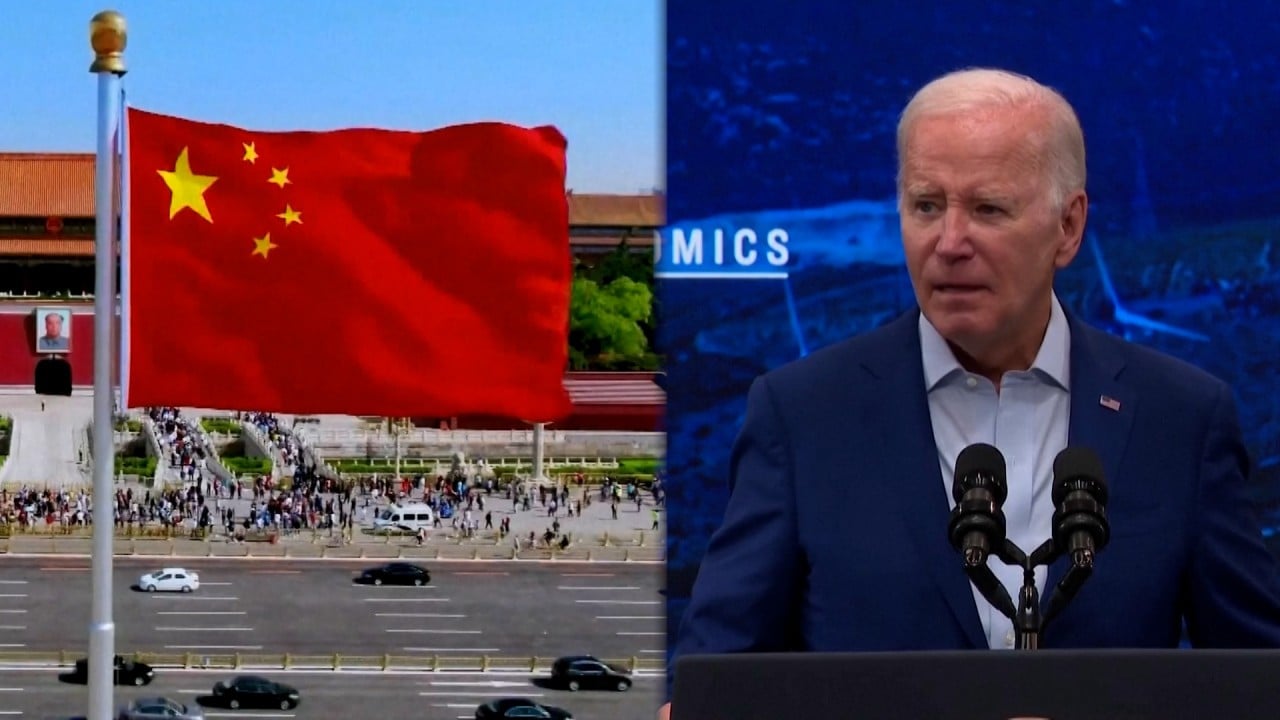
The future is AI and humanoid robots, China’s industry minister says, in hi-tech research rivalry with US
- More research needed in areas such as artificial intelligence to catch next wave of industrialisation, industry minister says
- The country’s industrial economy will also grow this year, he says
Jin, a top aerospace specialist, said AI could empower a new wave of industrialisation, with potential applications in industry, manufacturing and medicine.
“Humanoid robots and the metaverse are also key symbols of a future new round of technological revolution and industrial transformation,” he said.
“[The ministry] supports local governments in implementing pilot projects and formulating industrial policies.”
This includes overhauling its export sector to focus on new-energy products such as electric vehicles, lithium-ion batteries and solar batteries.
China is also marking milestones in advanced manufacturing, with the delivery of the country’s first domestically produced cruise liner Adora Magic City on Saturday.
State news agency Xinhua said it showed the strength of Chinese shipbuilding, in addition to the country’s domestically built aircraft carriers and large liquefied natural gas carriers.
In the CCTV interview, Jin also said he was confident that the industrial economy would continue to recover this year.
China’s manufacturing activity contracted last month, with the official manufacturing purchasing managers’ index (PMI) falling to 49.5 in October, down from 50.2 in September, according to the National Bureau of Statistics.
A PMI higher than 50 typically indicates expansion in activity, while a result below 50 points to contraction.
The result was below market expectations as some economists had forecast activity to stay in the expansionary range.
In another interview with Xinhua published on Saturday, Jin said the ministry would draft and implement action plans for future industrial development, targeting areas of AI, humanoid robots, the metaverse and 6G telecommunications.
“We will map out digital transformation action plans for key industries and areas with AI as a highlight. We will push for AI to empower new industrialisation with the goal of intelligent manufacturing,” Jin said.
National Development and Reform Commission chairman Zheng Shanjie echoed Jin’s call on future industries.
“We will aim to open up new areas and tracks for development in the next step,” Zheng said in a separate interview with Xinhua published on Friday. “[We will] actively cultivate emerging and future industries to create new engines and strengths for development.”
Zheng said key areas included integrated circuits and new-energy vehicles. “We will be forward-looking and strategic in planning future industries,” he said.



